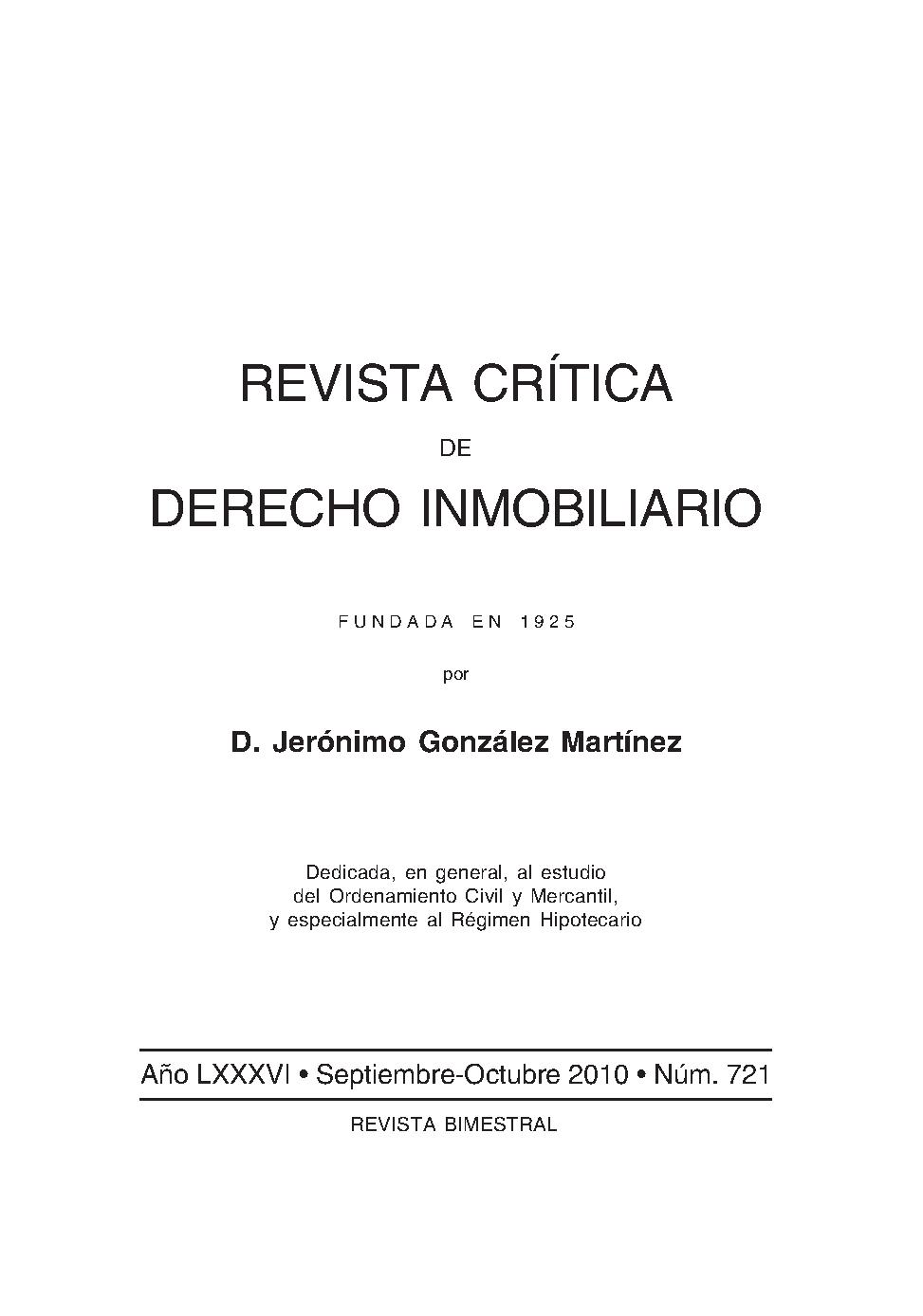LOS LÍMITES A LA EFICACIA DE LA INSCRIPCIÓN DEL REMATE (CRÍTICA DE LA DOCTRINA JURISPRUDENCIAL INICIADA POR LA STS DE 5 DE MARZO DE 2007).
Keywords:
FORECLOSURE, AUCTIONAbstract
The fundamental idea I have tried to uphold in this paper is that the winning bidder in a foreclosure auction must receive the selfsame identical ownership that the debtor held before him. 1. The registration system does not give the winning bidder any guarantee of the physical identity of the auctioned property, which is not as described in the registry or as described in the foreclosure order or auction announcement, but rather the registration system guarantees that the auctioned property is how it is in reality, and this the winning bidder must investigate. 2. Nor does registration of the adjudication to the winning bidder give any guarantee against publicly declared burdens on the adjudicated thing, nor does it guarantee public, peaceful possession of the auctioned thing, nor does it give any guarantee against legal restrictions on ownership (e.g., legal redemption, city planning legislation, public domain); this the winning bidder must investigate outside the registration system. 3. Registration publicity should not be extended to the winning bid. In addition to there being reasons of form for refusing publicity, the registrar has conducted no check of the identity and physical reality of the property, and there has been no effective check of the reality of the transfer. Moreover, the registrar cannot furnish an a non domino guarantee (under the Mortgage Act, §34) of the right of ownership in the auctioned thing for two substantial reasons: first, because ownership is protected by the Constitution and is a manifest right prior and superior to registration, and it is my understanding that it makes no sense for the owner to have less protection in the auction than the possessor or the holder of an easement or a legal restriction on ownership; and the second substantial reason for refusing publicity of the winning bid is that the conditions of the Mortgage Act, §34, are not met, because the auction is not a sale, but an act of random nature, and it is not set in motion by the registered owner of title, but by the judicial authorities. 4. As of the 1992 reform, and in Act 1/2000 on civil procedure, guarantees of foreclosure rulings are reinforced through recognition of the particular efficacy (jus prioritatis, jus persequendi) of the caveat of attachment that precedes the auction and forms the causal justification of the auction. By virtue thereof, the winning bidder may remain unaware of any sales, credits and preferred rights that are not registered or caveatted before the caveat of attachment (unopposability of unregistered titles); but manifest rights (including ownership) must be opposable against the winning bidder, particularly acts to dispose of the thing that are performed by the registered owner of title before the attachment and are public, socially consolidated and under no suspicion of fraud. Thus, the classic distinction in case law between the sale of another's property and double sale is wise and profound, and it reflects the distinction between unopposability and registration publicity. 5. The registration system is called upon to enforce the procedural priority of foreclosure and the rank and priority of ca veats, and the registration system can reserve preference for the debt at issue in the foreclosure. In my opinion, the causality of the auction (in its procedural, registration-related and physical fundament) is incompatible with the winning bidder's purchase a non domino. And particularly because of the possible concurrence of attachments or accumulation of foreclosures pertaining to the same property (due to the causality of the auction), the winning bidder should not be seen as acquiring ownership from the registered owner of title, but rather as stepping into the place of the registered owner of title through subrogation.









